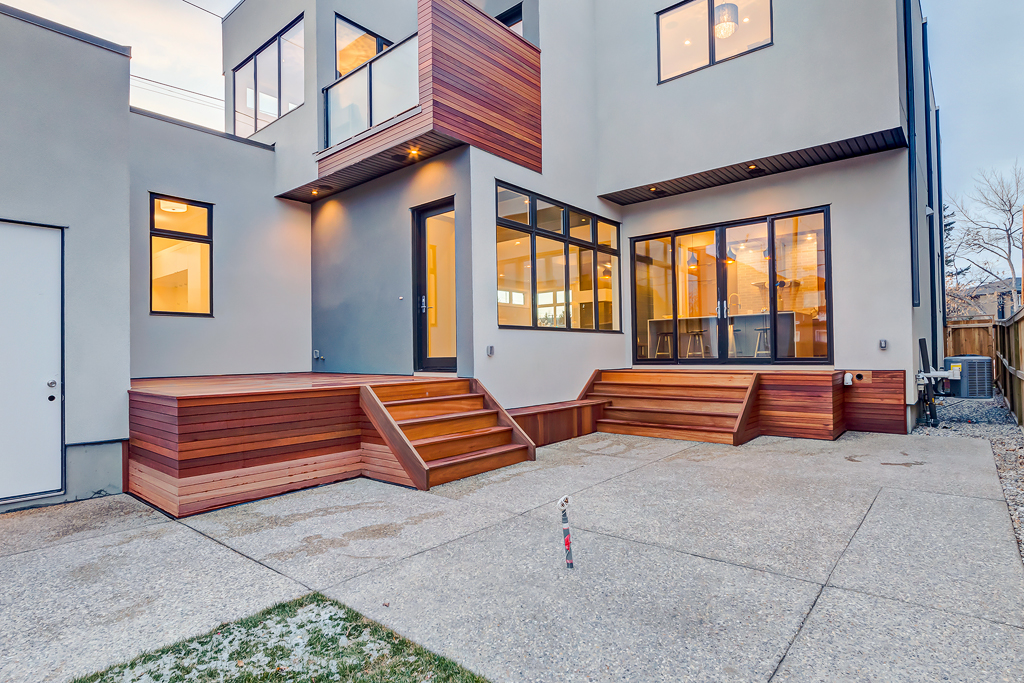Learn Everything you need to know before building a custom home
Download our guide now!
Luxury and accessibility are no longer separate concepts. As more homeowners plan for the long term, the demand for homes that combine sophisticated design with functional accessibility is on the rise. The principles of inclusive and universal design ensure that luxury homes remain elegant, comfortable, and livable for all ages and abilities. Let’s explore how accessibility and aging in place can be seamlessly integrated into high-end residential architecture without compromising beauty or style.
Inclusive design focuses on creating environments that accommodate everyone regardless of age, mobility, or physical ability, and without sacrificing aesthetics. In luxury homes, this philosophy translates into thoughtful architecture and innovative materials that promote independence, safety, and comfort.
Universal design features are not just practical, they are future-proof. By anticipating changes in lifestyle and physical needs, inclusive homes allow residents to age gracefully in place, avoiding costly retrofits later.
Calgary’s luxury homeowners are increasingly thinking long-term. Rather than downsizing, many are choosing to adapt their existing homes to accommodate evolving mobility and lifestyle needs. Aging in place means maintaining the comforts of a familiar environment while ensuring accessibility and convenience.
Key motivations for aging in place:
Preserving independence and dignity.
Avoiding relocation or assisted living.
Maintaining community and family proximity.
Enhancing long-term home value through adaptability.
Q: Can a home be both luxurious and fully accessible?
A: Absolutely. The best luxury homes blend accessibility seamlessly into their design, so that features like wider doorways, elevators, or curb-less showers feel like refined design choices, not medical accommodations.

Barrier-free entrances create smoother transitions from outdoor to indoor spaces. These can be subtly graded to maintain architectural elegance while improving accessibility.
Standard luxury homes often feature grand entrances and open-concept layouts, which naturally complement universal design. Doorways of 36 inches or more and wide corridors allow easy navigation for wheelchairs, strollers, or mobility aids.
Designing a primary bedroom and ensuite on the main level makes luxury homes functional for all ages. West Ridge Fine Homes often includes these designs in both acreage and inner-city builds, ensuring long-term adaptability.
Barrier-free showers, grab bars disguised as towel rails, and anti-slip flooring can be both functional and stunning. Think large marble tiles, integrated benches, and rainfall showerheads with adjustable height.
Modern residential elevators are compact, quiet, and customizable to blend with high-end interiors. For multi-level homes, an elevator is no longer a luxury, it’s an investment in future comfort.
Technology plays a key role in creating inclusive environments. Automated lighting, temperature control, and voice-activated systems simplify daily routines for all users.
Examples of accessible tech integrations:
Voice assistants: Control lighting, music, and appliances hands-free.
Smart security: Automated locks and video doorbells enhance safety.
Adjustable countertops: Motorized surfaces adapt kitchen height for various users.
Motion sensors: Improve energy efficiency and ease of navigation.
Q: Can smart home systems be customized for accessibility?
A: Yes. Builders like West Ridge Fine Homes design automation systems tailored to each client’s needs creating homes that are both intelligent and inclusive.

Accessibility doesn’t have to look clinical. The best designs combine beauty and usability.
Tips for luxury integration:
Use premium materials: Natural stone, brushed metal, and warm wood tones elevate the look of accessible features.
Conceal functional elements: Hidden handrails, recessed lighting, and integrated ramps maintain clean architectural lines.
Maintain flow: Avoid abrupt transitions or mismatched flooring; continuity enhances both design and safety.
Example:
Imagine a home in Calgary’s Springbank area featuring an open-plan living space with a gently sloped entry, wide French doors to a terrace, and a glass-walled elevator all blending into a modern alpine aesthetic. That’s inclusive luxury in action.
In Calgary’s variable climate, outdoor spaces need special attention. Smooth, slip-resistant pathways, covered patios, and strategically placed seating can make gardens and decks usable all year.
Design ideas:
Heated walkways and driveways for snow-free access.
Raised garden beds for accessible outdoor activity.
Barrier-free decks with frameless glass railings for uninterrupted views.
Investing in accessibility is not only about convenience, it’s also about long-term property value. Homes with universal design appeal to a broader audience, from young families to retirees.
Benefits include:
Increased marketability: Accessible homes attract more buyers.
Reduced renovation costs: Future modifications become unnecessary.
Enhanced comfort: Design that serves all ages improves quality of life.
For homeowners exploring options, West Ridge’s Renovations services help integrate accessibility into existing homes without compromising luxury.
Q: How can accessibility be incorporated without changing the overall design theme?
A: Through early-stage planning. Accessibility should be part of the architectural concept, not an afterthought. West Ridge works closely with clients to ensure that every aesthetic choice supports function.
Q: Are there specific design codes in Calgary for accessible homes?
A: Yes, Calgary follows Alberta Building Code accessibility standards. However, luxury builders like West Ridge go beyond compliance creating spaces that are not just accessible, but inspiring.
Q: Is accessibility relevant even for younger homeowners?
A: Definitely. Inclusive design benefits families with children, guests with disabilities, and anyone planning for long-term living.
A truly luxurious home is one that grows with you. Inclusive design allows homeowners to enjoy elegance, comfort, and independence at every stage of life. Whether you’re building new or renovating an existing property, West Ridge Fine Homes specializes in crafting homes that balance architectural excellence with future-ready functionality.
📞 Contact West Ridge Fine Homes
4511 Glenmore Trail #11, Calgary, AB T2C 2R9
403-724-7523 | [email protected]
